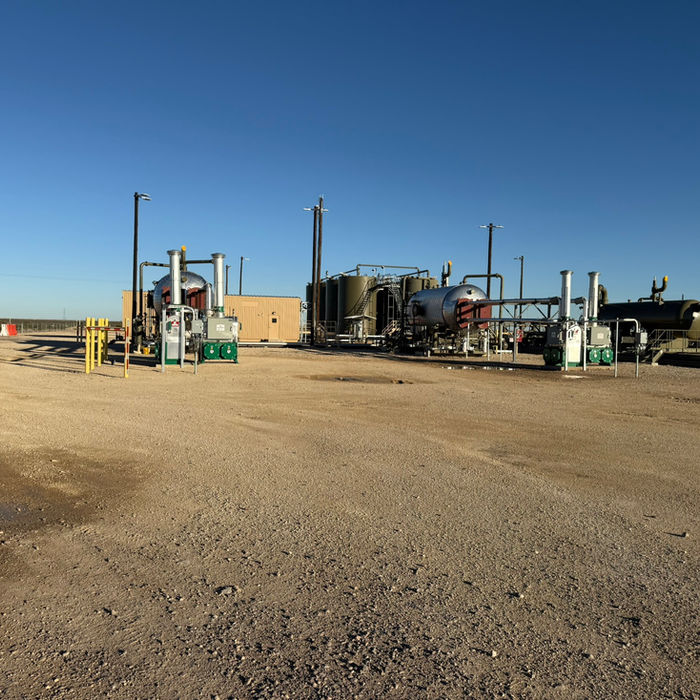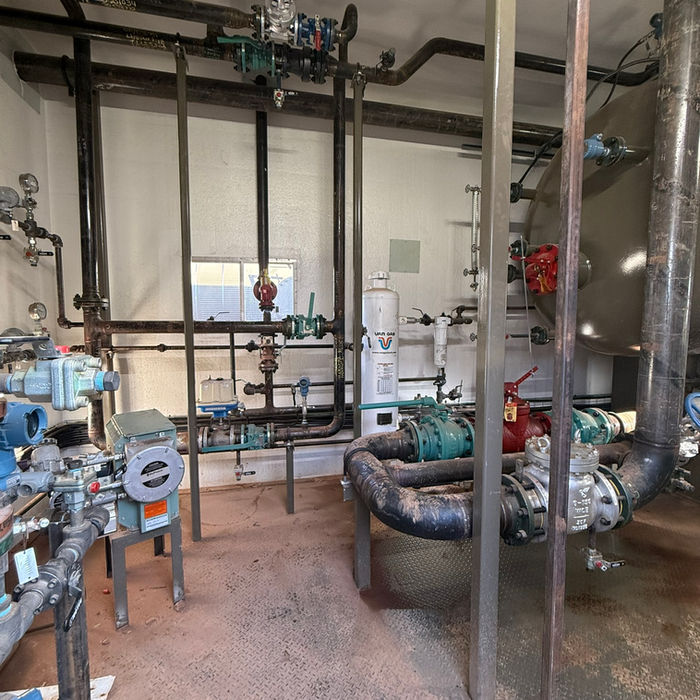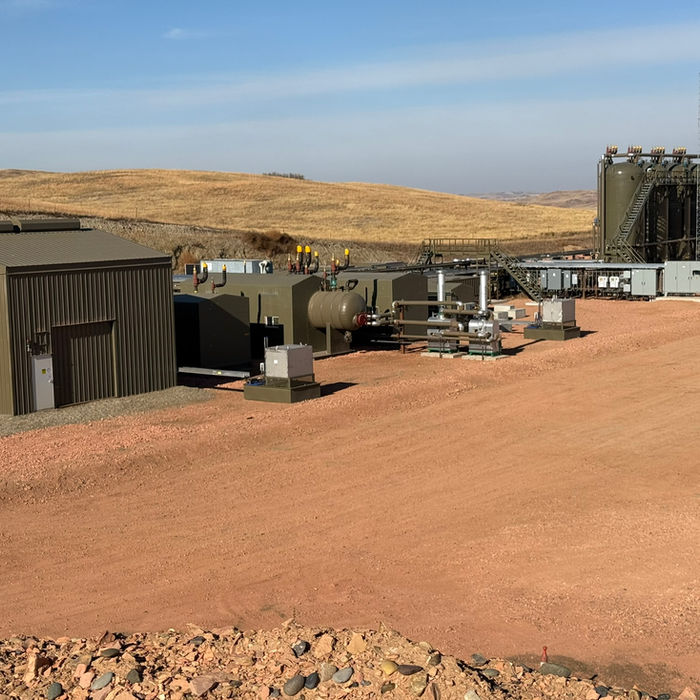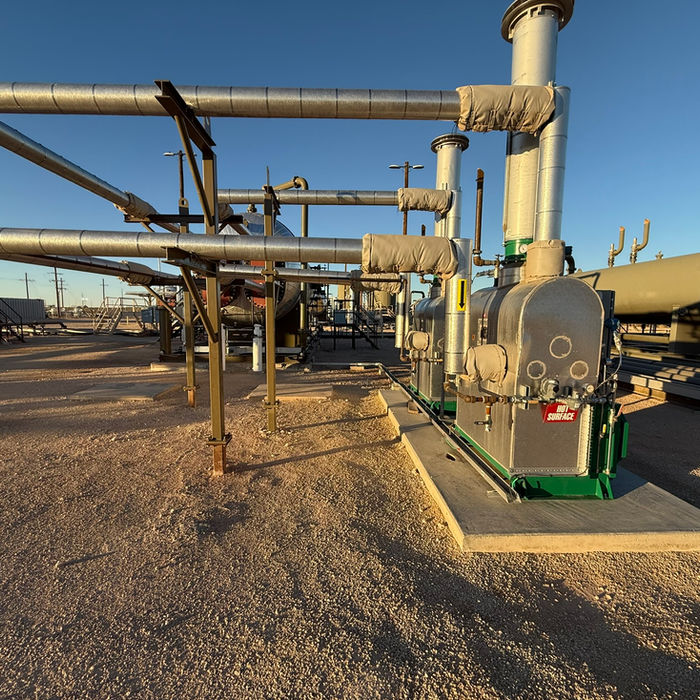
CWT – Gas-Powered Indirect Heating


CWT
The CWT gas steam boiler heating system was designed in western Canada over 20 years ago as an alternative to conventional heating systems in the oil and gas industries. It evolved into what we market today as a basic self contained steam boiler with the ability to operate without any external power source. This system was introduced, by the developer in conjunction with the founder of Elite, into the Bakken oil fields in 2015 to heat vertical treating vessels.
Today, in the lower 48, there exists more than 200 systems heating process fluids in the oil industry.
An indirect heating system that is proficient at heating crude oil for processing purposes.
CWT technology uses steam to indirectly heat crude oil, making it much safer, more cost effective, and better for the environment than the traditional firetube systems that are currently used today.

How CWT Works
The CWT indirect heating system is a two-phase thermosiphon that transfers heat to the process through an innovative technology called the Heat Driven Loop (HDL).
A mixture of water and glycol is contained in a vacuum state and heated by a low-pressure flame bed. The water changes to steam at a lower temperature due to the vacuum state.
The steam is then allowed to rush towards the process through a system of tubes (heat exchanger). The steam then expends its energy and condenses back to liquid form.
The liquid (Water) gravity feeds back to the evaporation chamber where it will again be recharged back to steam.
This continuous loop of transferring energy from a flame bed to process fluid, using steam and the latent heat of vaporization, is the key to the CWT system.
Utilizes an ASME Sec IV steam boiler
Closed system under vacuum with no make-up water
Low pressure flame bed (<0.5 psig pressure) supplies heat to the water/glycol mixture causing the water to boil almost instantly which results in an exceptional response time
Uses a process line temperature sensor ensuring exact control
Steam temperature self-adjusts up to 220F
Uses the latent heat of vaporization making it more efficient
ASME Sec IV controls ensure safety
The vacuum state that the CWT system runs on also reduces corrosion as there is very little to no oxygen inside the heat driven loop (HDL) system and allows the heater to operate at less than 15PSI and as high as 220F.



Heater Gas Consumption
The CWT indirect heating system has a major increase in thermal efficiency. The CWT system boasts thermal efficiency between 70 and 80 percent. (third-party tested) With the CWT system running on low pressure of (less than .4 psi) of well head or utility gas the CWT system has a reduction of fuel gas consumption by up to 50 percent and the increase in thermal efficiency means that there is less fuel consumption and less greenhouse gas emissions emitted to the atmosphere.
Benefit of CWT Indirect Heating vs. Traditional Firetube Methods
Feature
CWT Heat Exchanger New Technology
Firetube Traditional Method
Efficiency & Heat Distribution
Utilizes a purpose-built heat exchanger that …
Relies on direct flame contact, resulting in …
System Longevity & Maintenance
Operates at controlled, lower temperatures, a…
High temperatures cause gasket failures, mine…
Design & Safety
Engineered with ASME boiler and exchanger for…
Traditional design with smaller tubes and lim…
Emissions & Fuel Costs
Delivers superior thermal efficiency, reducin…
Thermal efficiency typically ranges between 4…
Operational Reliability
Eliminates the risk of flame impingement enti…
Thermal efficiency typically ranges between 40–45%, requiring higher firing rates that lead to fuel waste and increased operational costs.

CWT Current Applications
Horizontal Heater Treater (HHT)
We have seen an increase in horizontal treater firetube failures. With a horizontal treater able to treat more overall fluid than a vertical treater can. This makes the horizontal treater firetube failures catastrophic.
By utilizing the CWT Indirect heating system an operator can eliminate this problem. By heating the oil indirectly and pulling out the firetube and inserting the CWT systems heat exchanger, you eliminate the thermal degradation that causes most of the firetube failures.
Vertical Heater Treater (VHT)
Safe, Silent, Long Life
No moving parts like motors and pumps
Silent operation
Low pressure (2 oz) utility or well head gas supply
Flame arrested air intake built to US Coast Guard standard
ASME Section IV vacuum boiler design
Operates from 26” Hg to 15 psig and 250 degrees F
Certified Non-incendive electrical control system
Operates 21 feet from tank in general purpose area
Operates at 75 to 80 percent thermal efficiency
No electricity required
No special boiler certifications to operate in class one zone two hazardous location
Vapor Recovery Towers (VRT)
With the use of a recirculation pump the CWT indirect heating system makes it very cost effective when heating several different types of vessels including towers. This allows for an easy retrofit on older locations and will give operators more options and flexibility on new locations.
Tank Heating
System flexibility allows for custom heating applications such as tank heating for oil or water.
Current Applications

Dual Unit Benefits
With CWT we can now heat two vessels with one CWT unit utilizing our dual unit system. This is an added cost benefit to the producer and can divide the cost of the system over two wells.




















































